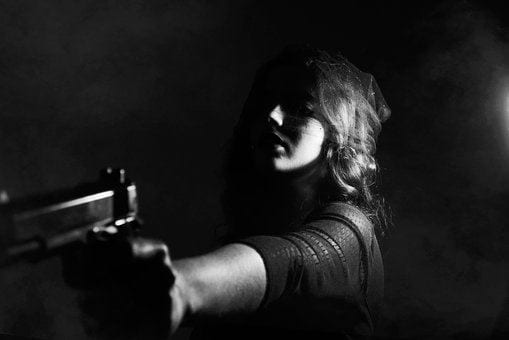By Beth Owens
Beth Owens explores the issue of gun control in the United States.
Dunblane, Scotland, 13th March 1996: Thomas Hamilton shot dead 16 children and one teacher after walking into Dunblane Primary School with four handguns. The following year, the British government banned all cartridge ammunition handguns.
Port Arthur, Tasmania, 28th April 1996: Martin Byrant killed 35 people in a popular tourist area with an AR-15 semiautomatic rifle. The same year, all states and territories ban civilian ownership of self-loading weapons and enacted a mandatory ‘buy-back’ of over 643,000 firearms.
United States: Newtown, Connecticut, 14th December 2012: Adam Lanza killed his mother, 20 children, and 6 teachers at Sandy Hook Elementary school. Seven days later, the National Rifle Association (NRA) held a press conference at which executive vice president Wayne LaPierre declared that “the only thing that stops a bad guy with a gun is a good guy with a gun.”[i] The Assault Weapons Ban bill of 2013, which would have required universal background checks on all firearms sales, failed to pass the Senate.
Why have mass shootings in other nations been a huge catalyst for gun reform, but not in the US, where gun violence kills over 36,000 Americans annually? [ii]
The answer lies within the US Constitution’s Second Amendment, and how gun regulation has become a discussion about how to balance individual rights and collective safety. According to Adam Winkler, this is further complicated by the existence of not one but two Second Amendments, the judicial and the aspirational.[iii] The former is comprised of court decisions and legal precedents, whilst the latter is the political dialogue of groups, such as the NRA, where citizens should have access to any firearm and be allowed to carry them in public both concealed and openly. As Winkler says, what makes the Second Amendment unique is that this aspirational version is increasingly playing a bigger role in shaping legislation than the judicial.
With this logic, it’s easier to understand why the Federal Assault Weapons ban was allowed to expire in 2004 to little protest, and why in 2016 the Supreme Court ruled that “the Second Amendment extends, prima facie, to all instruments that constitute bearable arms, even those that were not in existence at the time of the founding.” [iv] The research of Steffen Hurka and Kerstin Nebel on the relationship between mass shootings and policy changes helps to shed some more light on this. The link demonstrated in other nations between so-called ‘external shocks’ (unexpected traumatic events) and policy change is unforthcoming in the US because although the external shock of gun violence is shared initially, the different sides will ultimately take away different lessons.[v]
For gun control supporters, mass shootings are evidence that stricter, federal regulation is needed. However, this stance creates difficult questions; should there be restrictions on what firearms/ammunition can be purchased, and by which people? If so, how much restriction is permissible within the Second Amendment? This gets debated endlessly, but the event that was the catalyst falls out of the media spotlight long before any action is taken. Another critical window to make change is lost.
For gun rights activists, mass shootings demonstrate that regulation doesn’t work and that more people should be armed to defend themselves. Activists have the upper hand in this debate for a relatively simple reason; it’s much easier to stand against policy change as a platform in the media than to advocate for it. Research by Steidley and Colen uses the success of the NRA as an example because their uncompromising stance against any kind of legislation is simple and easy to communicate through the media. When a large-scale shooting event occurs, they are ready to swing into action with a condensed but very clear message; that they aim to safeguard ‘civil rights’ and American heritage against any threat. In comparison pro-gun control advocates appear to lack such conviction, because what a world with more restrictions would look like is much harder to communicate to the media’s short attention span.
Ultimately, the gun control debate is an age-old battle between ‘freedom to’ versus ‘freedom from’ which creates two incompatible interpretations of a political issue. The pushing for restrictions has its basis within liberating Americans ‘from’ gun violence, whilst advocates for looser restrictions want increased freedom ‘to’ defend themselves. The question is: can a middle-ground be found between these ideals?
References:
[i] Overby, “NRA: ‘Only Thing That Stops A Bad Guy With A Gun Is A Good Guy With A Gun.” https://www.npr.org/2012/12/21/167824766/nra-only-thing-that-stops-a-bad-guy-with-a-gun-is-a-good-guy-with-a-gun
[ii] Smith et. al, “Broadening the Perspective on Gun Violence: An Examination of the Firearms Industry, 1990–2015,” 584. http://www.sciencedirect.com.ezproxy.auckland.ac.nz/science/article/pii/S0749379717302581.
[iii] Winkler, “Is the Second Amendment Becoming Irrelevant?”, 253. https://www.repository.law.indiana.edu/cgi/viewcontent.cgi?article=11286&context=ilj
[iv] Pierce, “Caetano v. Massachusetts: Does the Second Amendment Protect Bearable Arms That Did Not Exist at the Time of Enactment?” https://www.americanbar.org/groups/litigation/committees/civil-rights/practice/2017/caetano-v-massachusetts-does-the-second-amendment-protect-bearable-arms-that-did-not-exist-at-the-time-of-enactment.html
[v] Hurka and Nebel, “Framing and Policy Change After Shooting Rampages: A Comparative Analysis of Discourse Networks,” 392. https://doi.org/10.1080/13501763.2013.761508.
Beth Owens is a postgraduate student in International Relations and Political Studies at the University of Auckland.
Disclaimer: The ideas expressed in this article reflect the author’s views and not necessarily the views of The Big Q.
You might also like:
What is the relationship between guns and the US Constitution? 🔊

